Castles
Check out our clan map page for referencing where many of these castles are located.
Looking for a specific castle. Feel free to jump ahead here:
- Abergeldie Castle
- Aboyne Castle
- Auchindoun Castle
- Beldorney Castle
- Cluny Castle
- Gight Castle
- Gordon Castle
- Greenknowe Tower
- Haddo Castle
- Huntly Castle
- Kenmure Castle
- Lochinvar Castle
Abergeldie Castle
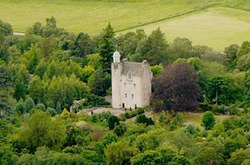
The name derives from the Pictish language, and means the “Confluence of Geldie”, a reference to its location near the confluence of River Geldie and River Dee. Sir Alexander Gordon of Midmar, son of the first Earl of Huntly, built it around the year 1550, on grounds acquired by the Gordon family.
Aboyne Castle
(historical name: castrum de Obeyn)
After the expulsion from Scotland in 1242, Aboyne Castle passed to the Knights Templar. Previously accomodated by John and Walter Vyset, of Clan Bisset, they were alleged of the murder of Patrick, Earl of Atholl at Haddington, East Lothian. Therefore, Aboyne Castle passed next to the Frasers of Cowie, before passing yet again, this time by marriage, to Sir William de Keith, Great Marischal of Scotland around 1355. In 1449, De Keith’s great granddaughter, Joan, brought the castle by marriage to Alexander Gordon, 1st Earl of Huntly (1449). Its present owner is the Marquis of Huntly whose family has owned it since the early 15th century.
Aboyne Castle is a private residence and therefore not visitable. However, feel free to visit The Castles of Scotland page for more historical in depth information.
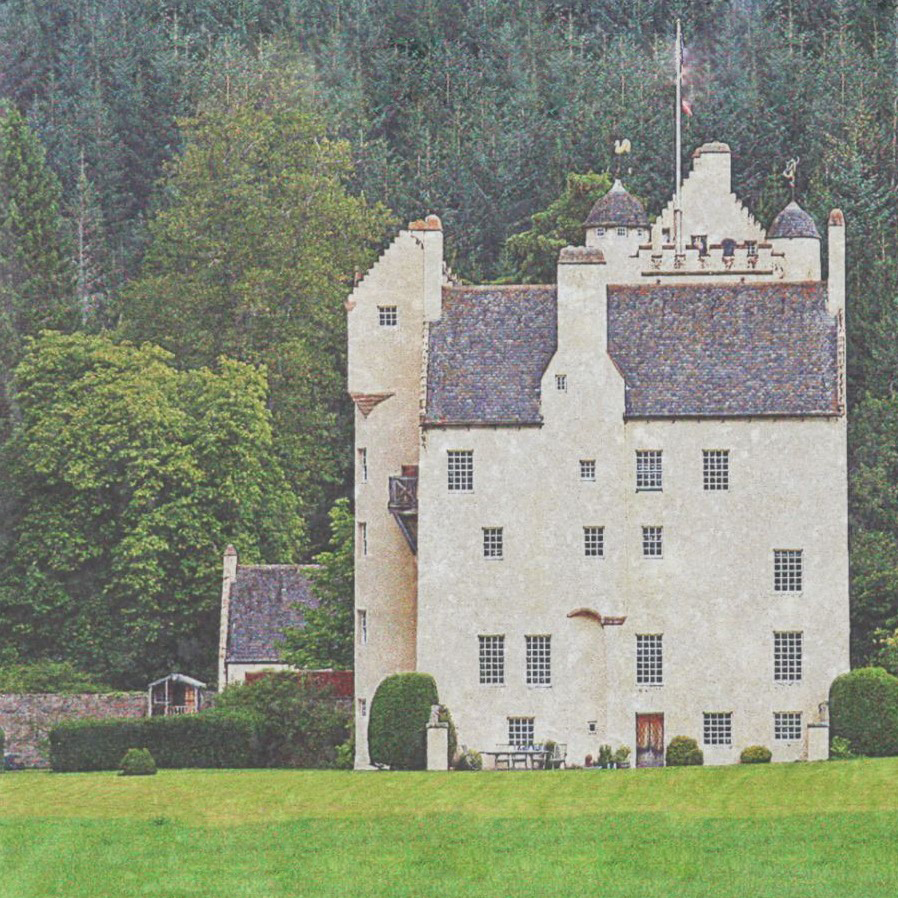
Auchindoun Castle
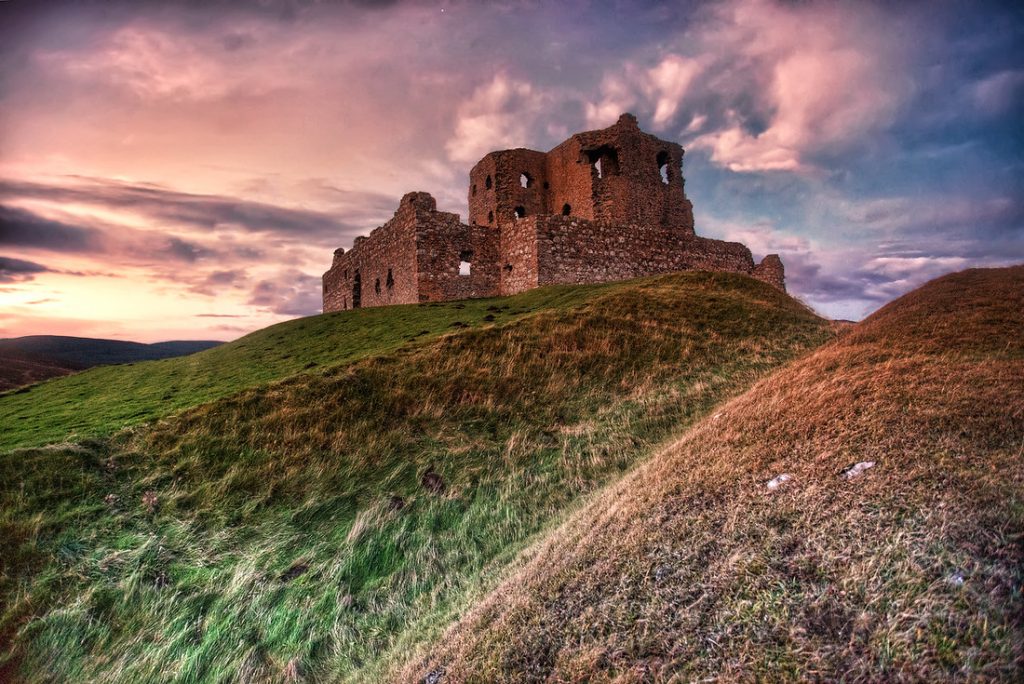
While there is evidence of prehistoric, probably Pictish earthworks in the grounds of the castle, the remains mostly visible today are of the castle constructed in the mid-15th century by Robert Cochrane (later to become an Earl of Mar (1458–79)). Passed down to the Clan Ogilvy in 1489 and from them to the Clan Gordon in 1535.
The Gordons added an extension to it in the 16th century before the Ogilvys reclaimed it in 1594. The castle was destroyed by the Clan MacKintosh in 1592 in retaliation due to the 6th Earl George Gordon, 1st Marquess of Huntly’s, killing their ally, The Bonny Earl O’Moray. The castle was once again awarded to the Marquis of Huntly following the Restoration of Charles II.
Auchindoun Castle is currently a ruin with no visitor access due to an undertaking of high level masonry inspections. However, you can stay updated by visiting their site here.
Beldorney Castle
In 1545 George Gordon purchased the land from the Earl of Huntly, and the castle was built before he died in 1575. Two wings were built to the west in 1679, while the original entrance was being replaced. Alexander Gordon acquired the castle in 1714. He then remodelled it including first-floor rooms formed from the hall which have since been removed. An interesting wall painting of a woman playing the lute was among paintings discovered during this restoration. The work included introducing bolection-moulded chimney-pieces and coved ceilings.
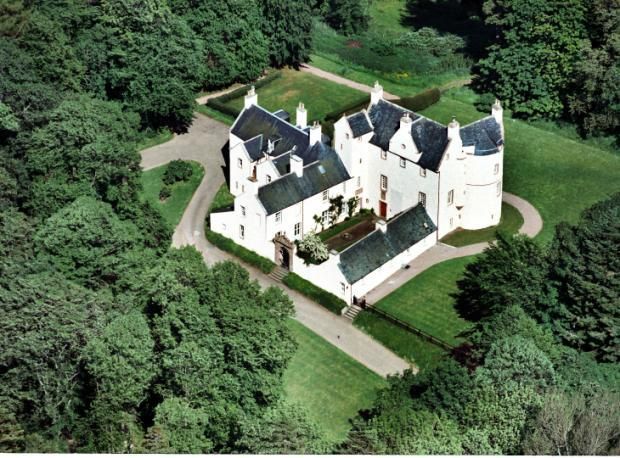
Cluny Castle
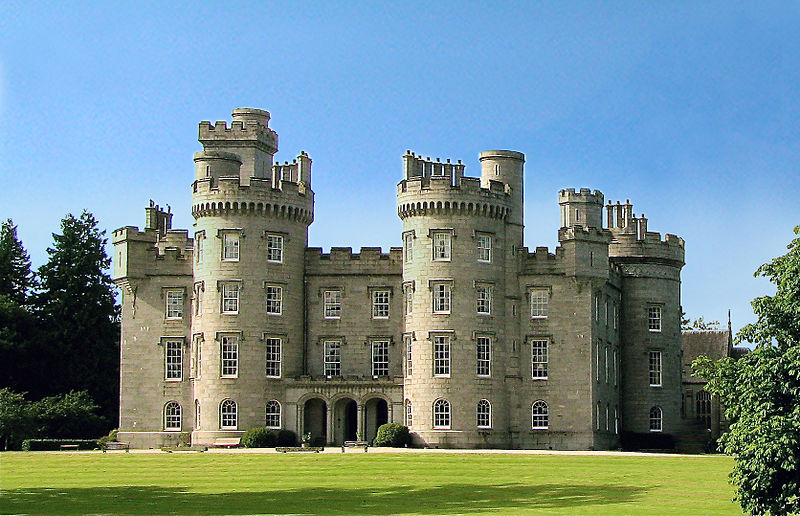
Cluny Castle was originally built c.1604 as a Z-plan castle replacing either a house or small peel tower. Sited in the parish of Cluny, it is south of Monymusk and north of Sauchen in Aberdeenshire, north-east Scotland. Owned by three separate branches of Gordon families over the centuries, it was used to shelter Jacobite rebels in the mid-18th century. Extensive additions were made in 1820 to the design of architect John Smith when it was in the ownership of Colonel John Gordon. Two wings of the castle and the adjoining private chapel were destroyed by fire in 1926, however the damage was restored.
Cluny Castle is currently a thriving and beautiful estate for anyone’s bucket list. From staying overnight in luxury and exclusivity, to weddings and events, and even filming ‘The Queen’, starring Helen Mirren, it is a majestic location. Check out their website for more information here.
Gight Castle
It is the ancestral home of Lord Byron. Gight Castle was built in the 16th century by George Gordon, the second laird. Later it was occupied by Catherine Gordon Byron, the mother of Lord Byron. However she sold it in 1787 to George Gordon, 3rd Earl of Aberdeen to pay off her debts. It was then occupied by the Earl’s son, George Gordon, Lord Haddo, until the latter’s early death in 1791, since when it has been uninhabited. In 1965 it was designated a scheduled ancient monument. It is said that the ruins are haunted by a piper who disappeared while exploring an underground passageway.
Visit the Castles of Scotland website for more in-depth historical information.
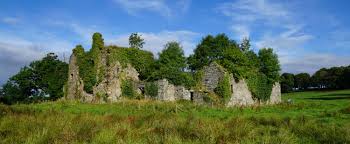
Gordon Castle
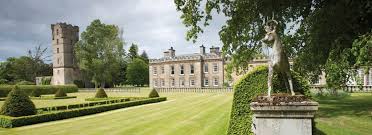
The original castle was built by George Gordon, 2nd Earl of Huntly in the 1470s and enlarged by his grandson.
Architect John Adam was commissioned, alongside the French architect Abraham Roumieu, to redesign the castle in 1764. However this did not come to fruition. Eventually the commission fell to the lesser-known Edinburgh architect, John Baxter, who rebuilt it in 1769 for Alexander Gordon, 4th Duke of Gordon. The central four storey block incorporated a six-storey medieval tower called the Bog-of-Gight. It was flanked by a pair of two-storey wings. The main facade was 568 feet (173 metres) long. Most of the castle has since been demolished. However, the Bog-of-Gight and one of the wings—now a detached medium sized country house in its own right—survive.
Gordon Castle is currently a thriving estate with a multitude of activities available. From a day visit of the Walled Gardens and Café, shopping for Gordon plum gin, salmon fishing, to staying overnight in the castle, or having a wedding there is something for everyone. Visit their site here for more information.
Greenknowe Tower
(also known as West Gordon Tower)

Greenknowe Tower was built for comfort and defence. It is a 16th century L-plan tower house that consists of four stories and a a higher wing. Three corners of the tower had bartizans, an overhanging corner turret, and the walls have been pierced by embrasures, narrow openings allowing archer or gunner weapons to be fired out from. The castle is dated 1581 with monograms of James Seton and Jane Edmonstone over the entrance.
The grounds are accessible; however, due to access restrictions while the states undertake high level masonry inspections, there is currently no visitor access to the actual tower. You can get more historical information and view a floor layout from The Castles of Scotland site here or retrieve current information from the Historical Environment Scotland site here.
Haddo Castle
Gordons, who later became the Earls and Marquesses of Aberdeen, have lived on the site for over 500 years. Haddo House sits in or near the site of the old Kellie Castle, the family’s previous dwelling which was burnt down by the Covenanters and dates from 1732. It was designed by William Adam in the Georgian Palladian style. The interior of the house though is late Victorian in style, having undergone refurbishment in 1880 by Wright and Mansfield. Haddo contains a large art collection, including a series of 85 castles by James Giles, an early work by Claude Lorrain and a Madonna believed to be by Raphael. There are also several portraits of 19th-century British politicians.
Haddo Estate is currently a thriving community that “comprises 5,000 acres of mixed farmland, commercial forestry, parkland, residential and commercial property and renewable energy and is home to families, individuals and a variety of businesses.”
You can find out more information on what they do by visiting the Haddo Estate site here.
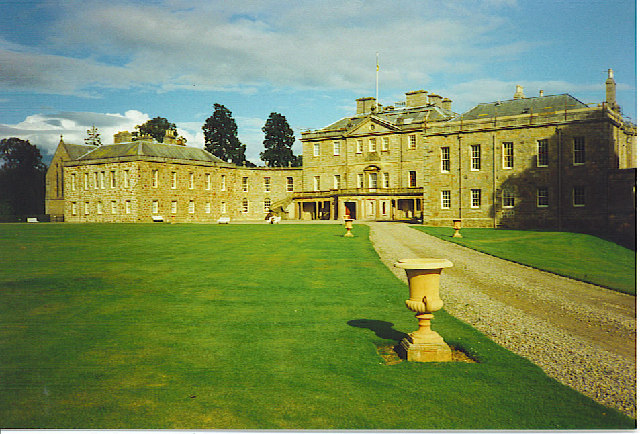
Huntly Castle
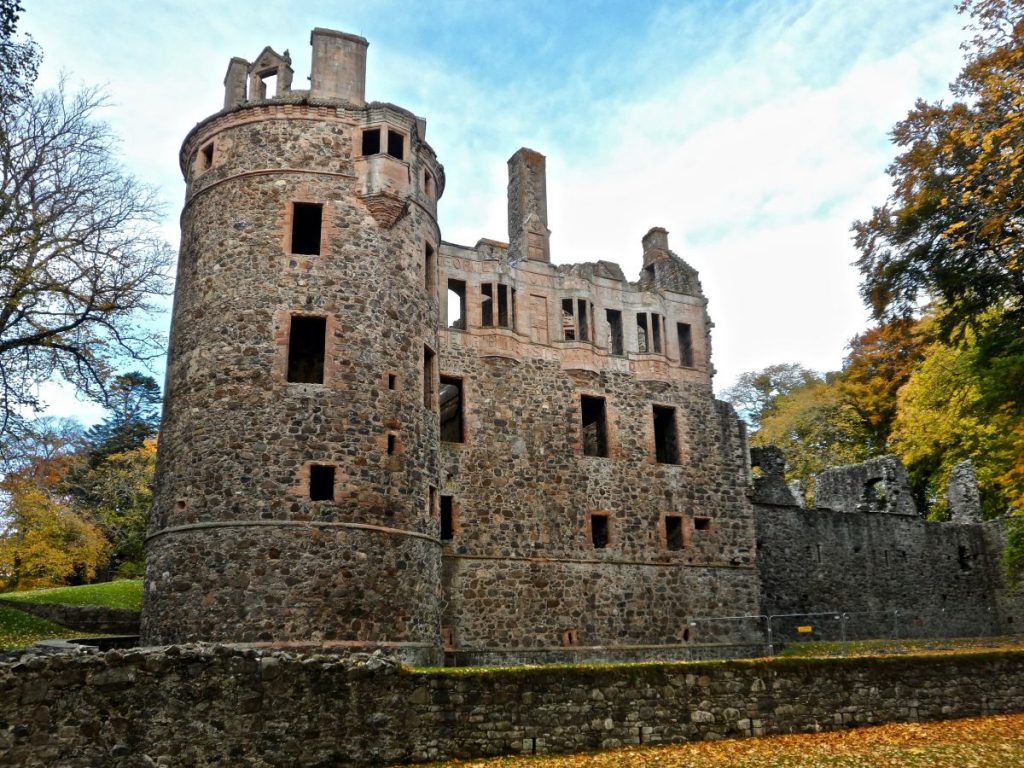
Originally named Strathbogie, the castle was granted to Sir Adam Gordon of Huntly in the 14th century. King Robert the Bruce was a guest of the castle in 1307 prior to his defeat of the Earl of Buchan.
It was set afire in 1452 by a force under the command of Archibald Douglas, Earl of Moray. In 1449 the king was at war with the powerful Black Douglases. The Gordons stood on the king’s side and with their men involved in the south of the country. The Earl of Moray, a brother of the Earl of Douglas, took the opportunity to sack the Gordon lands. They then set Huntly Castle ablaze. As a result the Gordons returned and quickly destroyed their enemies.
As you can see from this photo, Huntly Castle is now just a ruin. However, it is a beautiful ruin that you can visit today. They have a visual graphic of how the castle would’ve looked back in the day along with a layout. The heraldic entry-way is still intact and a great place to take a photo in front. Visit their site for more in depth overview of what to expect on your visit.
Kenmure Castle
It lies a mile to the south of the village of New Galloway, Scotland’s smallest Royal Burgh, and to the north of Loch Ken. The oldest part of Kenmure Castle dates from the 16th Century. It was the seat of the West March Gordons of Lochinvar.
The seat of the Laird (Baron, later Viscount) of Lochinvar was at Kenmure (Kenmuir) Castle near New Galloway, the site being occupied from late in the 11th Century until 1900. The real ‘Young Lochinvar’ of Sir Walter Scott’s famous poem was said to be the Laird of Lochinvar, William de Gordon of Kenmure. Unfortunately, there is no evidence to support the story. Sir William Gordon of Lochinvar was laird of Lochinvar and Kenmure, his eldest son being John of Lochinvar, whose mother was known as Joan Stewart the dumb lady. William may have died in 1455, having passed a charter of lands (a will) to his family in 1450. The Gordons of Kenmure were a cadet branch of the Aberdeenshire family, descended from the 14th century Sir Adam Gordon.
Visit The Castles of Scotland site to find out what happened to the Castle since.
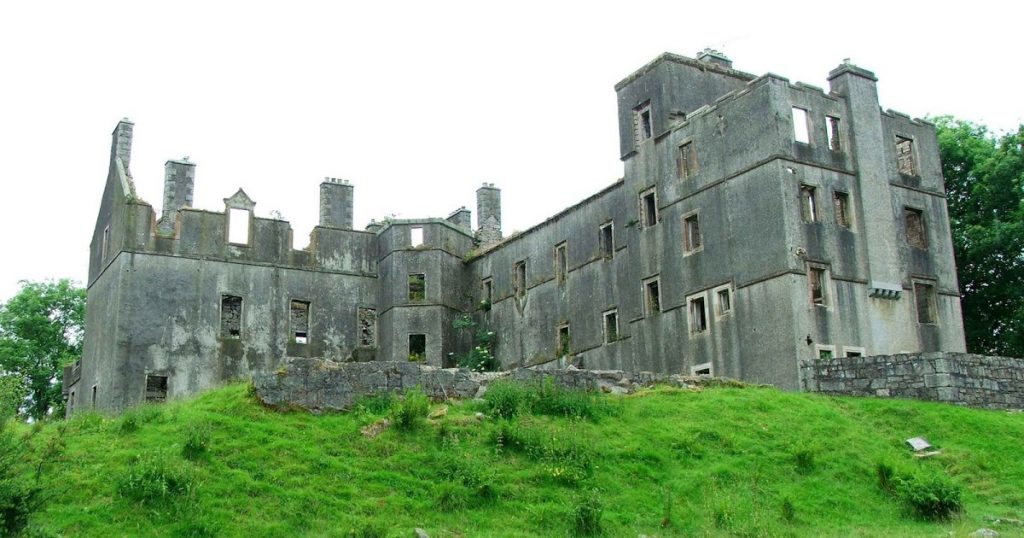
Lochinvar Castle
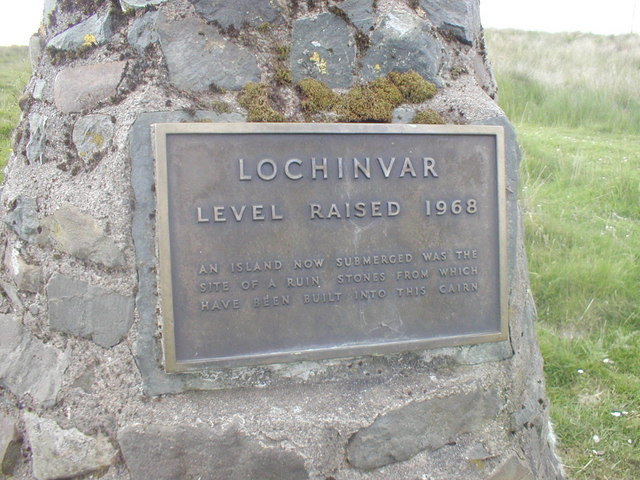
Lochinvar is a loch in the civil parish of Dalry in the historic county of Kirkcudbrightshire, Dumfries and Galloway Scotland. It is located in the Galloway Hills, around 3.5 miles (5.6 km) north-east of St. John’s Town of Dalry. The loch formerly had an island on which stood Lochinvar Castle, seat of the Gordon family 1297. In the 20th century the loch was dammed to form a reservoir. This raised the water level and submerged the island with the ruins of the castle.
Lochinvar
by Sir Walter Scott
O young Lochinvar is come out of the west,
Through all the wide Border his steed was the best;
And save his good broadsword he weapons had none,
He rode all unarm’d, and he rode all alone.
So faithful in love, and so dauntless in war,
There never was knight like the young Lochinvar.He staid not for brake, and he stopp’d not for stone,
He swam the Eske river where ford there was none;
But ere he alighted at Netherby gate,
The bride had consented, the gallant came late:
For a laggard in love, and a dastard in war,
Was to wed the fair Ellen of brave Lochinvar.So boldly he enter’d the Netherby Hall,
Among bride’s-men, and kinsmen, and brothers and all:
Then spoke the bride’s father, his hand on his sword,
(For the poor craven bridegroom said never a word,)
“O come ye in peace here, or come ye in war,
Or to dance at our bridal, young Lord Lochinvar?”“I long woo’d your daughter, my suit you denied;—
Love swells like the Solway, but ebbs like its tide—
And now I am come, with this lost love of mine,
To lead but one measure, drink one cup of wine.
There are maidens in Scotland more lovely by far,
That would gladly be bride to the young Lochinvar.”The bride kiss’d the goblet: the knight took it up,
He quaff’d off the wine, and he threw down the cup.
She look’d down to blush, and she look’d up to sigh,
With a smile on her lips and a tear in her eye.
He took her soft hand, ere her mother could bar,—
“Now tread we a measure!” said young Lochinvar.So stately his form, and so lovely her face,
That never a hall such a galliard did grace;
While her mother did fret, and her father did fume,
And the bridegroom stood dangling his bonnet and plume;
And the bride-maidens whisper’d, “’twere better by far
To have match’d our fair cousin with young Lochinvar.”One touch to her hand, and one word in her ear,
When they reach’d the hall-door, and the charger stood near;
So light to the croupe the fair lady he swung,
So light to the saddle before her he sprung!
“She is won! we are gone, over bank, bush, and scaur;
They’ll have fleet steeds that follow,” quoth young Lochinvar.
There was mounting ’mong Graemes of the Netherby clan;
Forsters, Fenwicks, and Musgraves, they rode and they ran:
There was racing and chasing on Cannobie Lee,
But the lost bride of Netherby ne’er did they see.
So daring in love, and so dauntless in war,
Have ye e’er heard of gallant like young Lochinvar?